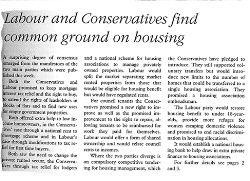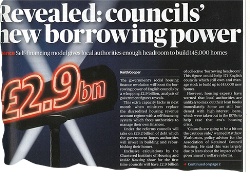You are viewing 1 of your 1 free articles
From the archive - week of 13 March
Inside Housing looks back at what was happening in the sector this week five, 15 and 25 years ago
25 years ago

All three major parties revealed their housing plans as they published manifestoes ahead of the April 1992 general election.
Among the Conservative pledges were the continuation of mortgage tax relief and Right to Buy discounts, the introduction of a new nationwide ‘rents to mortgage’ scheme, and an overhaul of the way council homes are managed. Labour also said it would keep mortgage tax relief and the Right to Buy.
The opposition also promised to introduce shared ownership and reintroduce housing benefit for under-18 claimants. While there was much common ground between Labour and the Tories, the Liberal Democrats made more radical pledges, including a proposal to replace mortgage tax relief with housing cost relief, to be paid to council tenants and private renters.
15 years ago
As homelessness figures continued to rise, the government unveiled plans to reduce to zero the number of families with children forced to stay in B&B accommodation.
The target, backed by a £125m injection from the Department for Transport, Local Government and the Regions (DTLR), set a deadline of March 2004 by which time no homeless family should be placed in a B&B except when no reasonable alternative exists and for no more than six weeks. The funding was said to be double the amount spent on homelessness the previous year.
The DTLR also published a framework for local authorities to develop their housing strategies and the Department for Work and Pensions promised to offer financial incentives for councils to use alternatives to expensive B&Bs.
Meanwhile, the government launched a cross-departmental committee on homelessness, led by housing minister Lord Falconer, and a homelessness directorate, led by Louise Casey. A report, released alongside this, accepted “there is little information about the number of people living in temporary or unsatisfactory accommodation”.
Five years ago

The introduction of a self-financing model for local authorities was set to boost English councils’ borrowing power by £2.9bn, according to an analysis by Inside Housing and the Chartered Institute of Housing.
The extra headroom would kick in from April when councils were to take on £29.2bn of debt.
The government hoped the councils would use this financial freedom to invest in building and refurbishing existing stock.
However, some experts warned town halls might be reluctant to take on more debt as many were still burdened with high interest loans taken out in the 1970s.
The Local Government Association said additional borrowing must cover maintenance, management and improvement costs, as well as new build programmes.